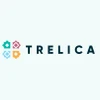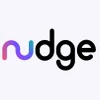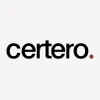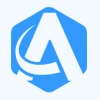SaaS is also termed as Software as a Service, on demand software and web-based software. SaaS business model works by hosting an application on cloud infrastructure so that it is available to users over the internet anytime and anywhere.
SaaS aims to bring simplifications and affordability together, thus allowing businesses to have access to enterprise software conveniently at an affordable cost.
Well, in this article we will discuss in detail everything you need to know about Software as a Service including SaaS examples that will help you start heading your business in the right direction!

What Is SaaS or Software as a Service?
Software as a Service (SaaS), also known as cloud app services, allows data and applications to be accessed through the internet avia the subscription model. So, this means users don’t have to install or download anything. They are free to use it directly through the web browser through subscription. SaaS model is basically about purchasing software services where payments are made usually monthly, quarterly or annually.
Not only this, but you also won’t even have to think about maintenance and upgrades, which ultimately helps you concentrate on key elements of your business.
SaaS is also popular as web-based software. Among other cloud options, it has indeed taken the lead owing to its many benefits such as being affordable, scalable, and flexible. If we go by figures, Software as a Service popularity has no sign of decline anytime in the future. The global SaaS market is expected to reach a market size of $185.5 billion by 2024 as per a report by KBV research.
Suggested Read: Best Software as a Service Tools for Startups and SMBs
Why Has SaaS Applications Become So Popular?
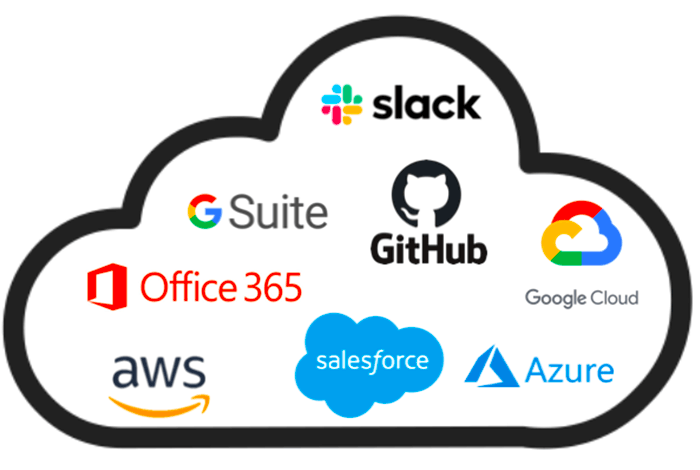
There are a lot of factors that have led to the popularity of SaaS model. Some of the vital ones are as follows:
- Increase in the adoption of smartphones
- Growing web usage
- Easily accessible from anywhere over the internet
- Digital technology standardization
- Easy to update and analyze data
- Ideal for businesses who cannot develop their own software apps
Popular SaaS Business Models in Terms of Pricing
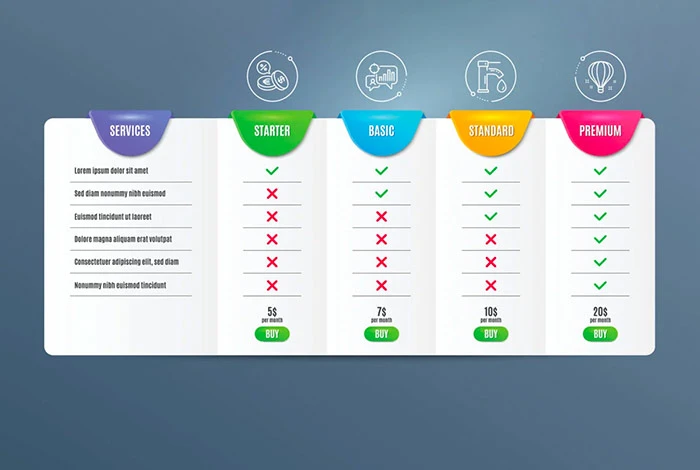
SaaS business models involve selling cloud based software by paying a subscription fee at a monthly or annual basis to get access to the software.
Some of the proven ways in which you can evaluate your SaaS software pricing are as follows:
- Freemium
Freemium is a popular SaaS marketing business model wherein platforms offer free access to some of their software features. The idea of the model is to attract users and fulfill their basic needs while incentivizing them to shift over to the premium version!
- Flat pricing
Flat based pricing model simply charges users a single price for a single service for access to their software. In the Software as a Service industry, this pricing model works best for businesses who offer a simple product with a limited set of features.
- Per user pricing
As the name suggests, the per user pricing model allows businesses to charge per user often per month. This type of pricing model is popular across all major software tools as it is simple to understand and implement.
- Pay for what you use
Also referred to as usage-based pricing, pay as you go model is where users are charged basis their usage of the product. The charge varies based on factors such as per call, per transaction, per API etc.
- Per feature pricing
For software that comes packed with features, it may be best to go for this pricing model. You can build tiers based on the impressive features wherein the highest tier usually offers more functionality. Your customers can scale when they wish to extend the functionality.
Suggested Read: What is Software aa a Service in Cloud Computing and How It Works
Different Types of SaaS Solutions
The SaaS industry is rapidly expanding, and the SaaS model can be broadly classified into vertical and horizontal Software as a Service companies. Vertical Software as a Service is targeted towards a particular niche or specific industry while horizontal Software as a Service model covers a wide range of the market through multiple industries.
What is Vertical SaaS?
Vertical SaaS is a type of solution that caters to specific industries such as healthcare or retail, insurance, etc. Since it is purpose built for niche sectors, it is often developed by people who have expertise in a specific industry. Moreover, the vertical SaaS model has a shorter market size. Some popular Vertical SaaS examples include BioIQ and Guidewire.
What is Horizontal Saas?
Horizontal SaaS is designed for a wide range of users across businesses and industries. It solves common problems in a business and includes social media management platforms, attendance tracking, HRM tools, CRMs, and more. Some prominent horizontal SaaS examples include QuickBooks, Slack and Salesforce.
Vertical SaaS Vs Horizontal SaaS

Now that we know what exactly vertical and horizontal SaaS solutions are, lets quickly know the difference between both. Vertical Software as a Service is one that addresses the need of one industry type while horizontal SaaS is built to be used across industries.
Horizontal SaaS is generally easier to use as it can be applied to multiple industries while vertical SaaS focuses on solving specific problems in a particular industry. As a result, vertical Software as a Service offers industry specific modules based on the user’s needs.
When you hear Software as a Service, there is a good chance that you might have heard about horizontal SaaS as it can by used by almost any industry.
| Point of Comparison | Vertical Software as a Service | Horizontal Software as a Service |
| Business model | Focuses on solving exact problems of one specific industry | Provides solutions for common needs across different industries |
| Target market | Aimed at a specific industry | Diverse customer base |
| Emphasizes on | Customer retention | User acquisition |
| Growth opportunity | Limits the number of potential customers | No limit as they can sell their product to businesses across different industries |
| Functionality | Business specific | Not business specific as it can be used by various domains |
| Ease of use | Complicated than horizontal software | Easy to use |
Top 15 Software as a Service or SaaS Examples
- Salesforce
- Zoom
- G Suite
- Slack
- HubSpot
- Shopify
- Netflix
- Dropbox
- Buffer
- Microsoft Office 365
- Zendesk
- DocuSign
- Canva
- ClickUp
- Kayako
We are aware of how hard it can be to keep up with the industry trends related to the emerging technologies and choose the best ones for use. So, we thought of curating this list of top 15 SaaS examples to make it a bit easy for you!
Salesforce

The first one in the list of top SaaS examples has to be Salesforce. This cloud-based CRM helps manage different aspects of your business such as improving customer service, automating sales processes, etc. In addition, this Software as a Service company can assist you with diverse products, such as Service Cloud, Sales Cloud, Pardot, and more for sales and marketing automation.
Zoom
If you are looking for the best video conferencing platform, then Zoom would be a great pick. This SaaS platform has been designed to offer simple to use features such as live chats, screen sharing, etc. to both companies and individuals alike. In addition, Zoom can also be used for webinars, content sharing, meeting recordings, co-host calls, call recordings, automated meeting scheduling, and more.
G Suite

G Suite, also known as Google workspace, offer applications that need no lengthy descriptions like Gmail, Google sheets, Drive etc. As you are aware of almost all these SaaS product examples, you must be familiar with how quickly they have become one of the most widely used productivity tools available out there.
All the G Suite apps are completely free to use, easy to set up, fully secure and encrypted and offer unlimited storage space for your files.
Slack
Slack is a cloud based business communication platform that has literally transformed the way you work in a business environment. Right from startups to large enterprises, everyone is using slack daily for many different reasons – be it messaging or organizing projects in real time.
The best bit about using this SaaS application is its simple user interface, fantastic customer support team and quick integration with various apps. In addition, Slack also helps you communicate better with your team by allowing you to either send message immediately or scheduling it for some time later, helping you choose the right word to say & so on.
HubSpot

HubSpot CRM is another popular SaaS application examples that has undoubtedly changed the face of how we manage our business. It provides effective tools for content management, SEO, social media marketing & more. HubSpot also has an active online community wherein it provides easy access to all the information you need in one place.
Shopify
Shopify is a Software as a Service based system that provides its users with end-to-end eCommerce services such as marketing, analytics, and integration, to name a few. It is one of those companies that has built a user-friendly interface.
Thus, allowing anyone even without prior experience to setup their eCommerce platforms easily. So, whether you need to build a website from scratch or scale your eCommerce site, Shopify has got you covered.
Netflix

Netflix is one of the most popular cloud-based services in the world that provides a variety of acclaimed TV shows, movies, documentaries, anime across various connected devices. It lets customers choose a subscription plan and pay a fixed amount of money on a monthly or annual basis.
One of the unique value propositions of Netflix is that users can stream their favorite shows 24*7 without ad interruption.
Dropbox
Dropbox was formed with the aim to make sharing and collaboration on file and data convenient for businesses. What makes this company a perfect SaaS example is its ease of use, especially its mobile app. In addition, it is also completely secure which makes it a great choice for individuals who need to store sensitive information.
Buffer
Buffer is a simple yet effective social media management tool that lets users schedule posts, engage and measure social media performance in just a few clicks. The tool helps save time and ensures that your social media presence always look top notch, thus, helping your business grow. What more? It has a user-friendly interface and hence you don’t require any training to manage your social media accounts using Buffer.
Microsoft Office 365

Microsoft Office 365 comprises apps that include Word, PowerPoint, Outlook & much more. All the Microsoft apps that we use on a day-to-day basis are SaaS product examples. However, you can still install and access these apps on your PC.
On the other hand, if you don’t need the desktop versions, you can only opt for cloud based apps with essential business plans that include features like file storage, email, conferencing & more.
Suggested Read: SaaS CRM: Everything You Need to Know About
Zendesk
Zendesk is one of the industry leading custom service software solutions that has helped numerous companies provide top notch support to their customers. Zendesk is one of the fastest growing SaaS products specializing in customer service.
It is specially designed to make sales service as seamless as possible. Moreover, it works for all types and sizes of businesses that are looking to provide excellent customer service without having to spend a lot on the hiring process.
So, if you’re unable to keep track of your incoming messages or need help streamlining your customer service department – Zendesk is the perfect option!
DocuSign

DocuSign is an e-sign technology that helps individuals, small and mid sized businesses as well as enterprises to simply send, sign and manage e-agreements in no time. It works on typically any platform, thus allowing you to sign documents virtually anytime and anywhere. Some of the notable features of DocuSign includes customized branding, reusable templates, real time audit trail, and more.
Canva
Canva is a photo and video editor tool that lets you create professional designs and publish and print them anywhere. With numerous design templates available for social media graphics, resumes, etc., and brand kits & quality content to choose from, you can kickstart your designing journey today with Canva.
What more? Canva Pro makes it easy for you to work together with your team to scale up your content with visuals, leave feedback & more.
ClickUp

ClickUp is a powerful project management and collaboration software that helps you simplify work and get more done in less time. The tool is highly customizable and easy to use. The best part is that you don’t need separate apps for performing multiple functions like setting calendar meetings, to-do lists, task timelines, document processing, collaboration & more as you can get all these things done in one place using ClickUp!
Third-party app integrations, process and task management, time management, team collaboration, and reporting are some of the core functionalities of the app!
Kayako
Kayako is a cloud-based helpdesk software that makes it simple for customer service teams to manage customer requests and conversations via live chat, email or phone. With Kayako’s helpdesk services like conversation assignments or tags, your company can stay on top of critical issues and immediately assign conversation to the right person. As a result, customers will be able to identify what they’re looking for and receive suggestions instantly.
Key SaaS Industry Trends

Now that we’ve explored the top SaaS examples, it’s time to go through the top SaaS trends.
- Leveraging AI
AI is everywhere and its relevance in the SaaS industry is no different. AI empowers businesses to drive better products and services while gaining insights about the target audience’s needs.
In addition, AI in SaaS can help predict customer behavior by analyzing previous measures in the application. With this technology, you can automate pricing, forecast sales and ensure higher customer value.
- Using Vertical SaaS
Using vertical SaaS is going to have a huge impact as it is completely customizable and target specific industries. Hence, industries like healthcare or retail who are looking to benefit from specialization are keen on working with a vertical type of SaaS.
- Low-Code Popularity
With the emergence of low code and no code platforms, a growing number of software developers and other professionals can build apps quickly. As a result, businesses can focus on user experience that includes pure business innovation.
Low code platforms help you build apps with visual programming instead of writing code line by line. Hence, it is a great opportunity for businesses that want to create in-house SaaS solutions but have no technical expertise.
- Migration to PaaS Clouds
As SaaS industry evolves, many developers or providers will focus on retaining clients more than ever. Hence, going further, it is expected to see SaaS migrate to PaaS. PaaS-centric solutions are flexible and accessible, and it empowers businesses to develop custom apps in addition to their unique services.
The major difference between PaaS and SaaS is that SaaS solutions are managed by a third party, whether it’s servers or the data. With PaaS, you get a cloud-based platform as a foundation for developing software.
- SaaS Integrations
SaaS app integrations involve linking SaaS application with other cloud-based apps via APIs (Application Programming Interface). Once connected, the app can share data with the other on premise or app, thus saving a significant amount of time for your team. Considering such benefits, today, an increasing number of SaaS providers are offering integration abilities.
- SaaS Analytics
SaaS analytics is one of the major SaaS industry trends. It is used by top SaaS companies to gain a valuable insight into their customers’ behavior. As every engagement matters, SaaS analytics tool is mainly formulated to get an idea of the overall customer experience. Infact, experts believe that in 2022, and going forward, analytics will become a core component of every SaaS platform.
Suggested Read: Popular Quotes on SaaS to Inspire Your Team to Achieve More
Conclusion
Well, that’s all! We hope that these informative article on What is SaaS, and the 15 SaaS examples and the latest SaaS trends gave you some valuable insight for your SaaS business.
These Software as a Service example made it quite clear as to how SaaS businesses offer practical solutions to both businesses and individuals. However, while there is no single tried and tested way for building a successful SaaS business, one thing is definite that building an easy to use and customizable SaaS solution can enhance your chances of success!
Suggested Read: Top SaaS Companies in India
FAQs on Software as a Service
What are SaaS advantages?
One of the biggest advantages of SaaS solutions is that customers need not setup or install software on your computer. Another notable advantage is the payment structure as most providers operate on a fixed subscription model. This gives you a clear picture of how much the software will cost and you can budget accordingly.
What are SaaS limitations?
SaaS limitations and concerns include the lack of integration support, data security issue as well as offers limited features and minimal customization opportunities. Moreover, with a SaaS solution, businesses often have to hand control over to third party service provider. As a result, you have to trust the provider used to ensure security.
What are Key SaaS characteristics?
Some of the key characteristics of SaaS include subscription-based filing, application security, automated provisioning, accessibility over the internet, and application security, to name a few.
When to use SaaS?
SaaS is a beneficial option when you want access to business applications anytime and from anywhere at a low cost. Further, SaaS is an ideal choice when you need access to an application from both web and mobile.
What is a SaaS business model?
SaaS business model is selling cloud based software over the internet and sometimes also via a desktop app to the customers on a monthly/quarterly subscription model.
What are the best SaaS examples in cloud computing?
Some of the popular Software as a Service examples include Shopify, Adobe, Netflix, Salesforce, and HubSpot.
How do SaaS apps work?
SaaS allows customers to use software and apps via internet service as per the subscription model. Users need not download or install apps.
What is the full form of SaaS?
The full form of SaaS is Software as a Service. It is a model in which apps are delivered via internet as a service to users anytime, anywhere.
Related Categories: Saas Backup Solution | Desktop as a Service (DAAS) | Data Backup Software | Cloud Management Service | Cloud Security Services | Cloud Analytics Solutions
Nishi Agarwal is a talented content writer and dance fitness instructor. She holds a degree in Mass Communication from Patna Women's College, where she acquired the tricks for writing, editing, and journalism. As a content writer with Techjockey.com, she has gained valuable experience in creating engaging and informative... Read more

















